Where art meets prose
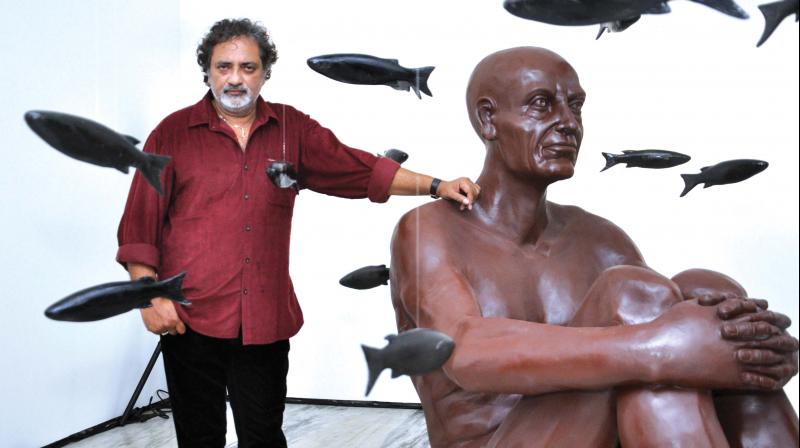
Actor/director Joy Mathew stands near a huge sculpture of a man — sitting with his arms around his knees and worry writ large on his forehead, his huge slippers a feet away and fish swimming around him, with a net high above. In the next room is the half-broken wreck of a ship, from the mast of which hangs a man in a carrier with his arms flung outwards looking lifeless. The third room has a stark wooden chest with a single spotlight focusing on a man’s body cradled foetus-like inside the box. Look up and one can see several buildings and cars turned upside down. A common thread runs through each of these sculptures — that of melancholy, despair, helplessness and a resignation to fate. From all of these sculptures emanate poems mirroring the same, if not more profound feelings. These poems are penned by Joy Mathew.
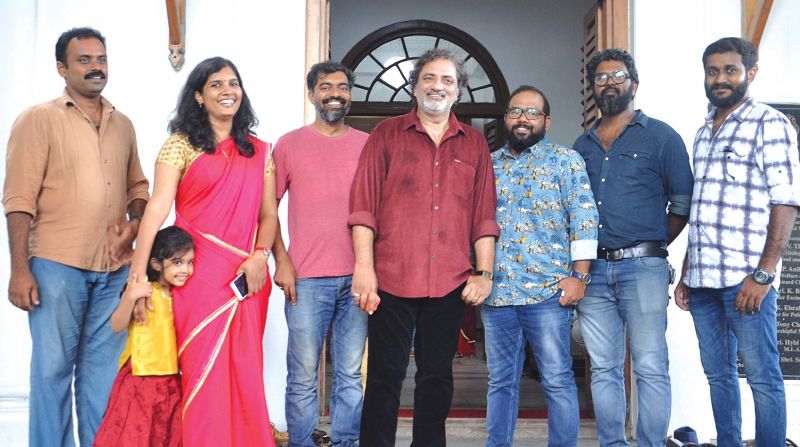 The creative side behind Poetry Installation Season 4 with Joy Mathew.
The creative side behind Poetry Installation Season 4 with Joy Mathew.
Most of us know him as a successful actor/ director, but this is another little known talented facet of Joy. Years back, he faced his share of trials and tribulations while searching for a job in Dubai, living there with no dear ones by his side, and with money being a cause of worry. He observed his surroundings during his stay there, where he saw firsthand the underbelly of the rich nation with its squalor, low wages and backbreaking work for expats.
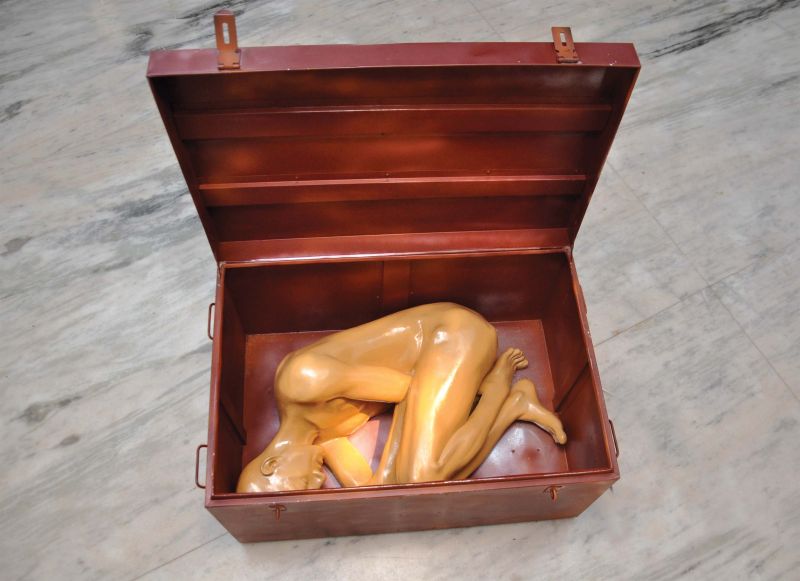 Rolla
Rolla
All through these hardships the expatriates faced, he saw them smiling, clutching on to any little happiness they could find and forging friendships to ward off loneliness. From these observations emerged a compilation of poems titled ‘Poems of Exile’, with three of these poems Deira, Rolla and Abra— all names of places in the UAE — being incorporated in the Poetry Installation Season 4 held in Kochi at the Durbar Art Gallery.
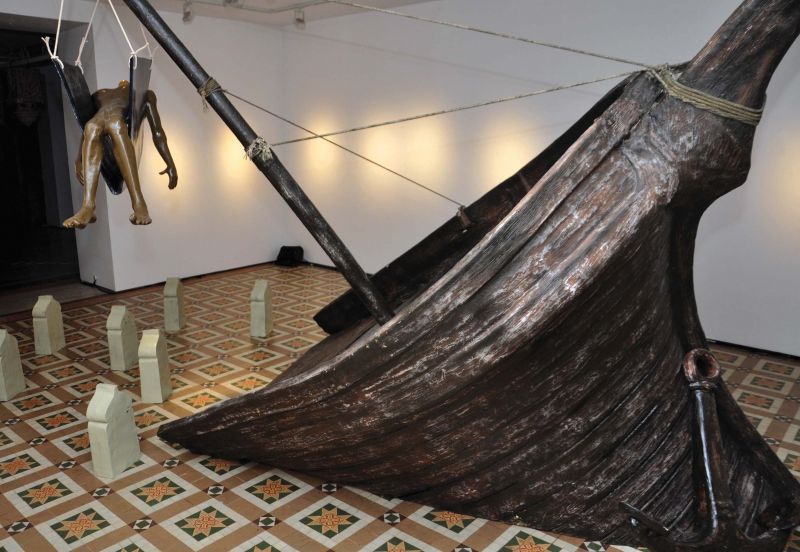 Deira
Deira
Three fibre glass sculptures give tangible form to the three poems narrated in Joy’s deep baritone with accompanying sounds matching the words in the prose. Joy chose the prose form to express his feelings and talks about the poems, “I am not saying these poems are autobiographical, but there are elements of reality.” Deira, Rolla and Abra are linked to each other.
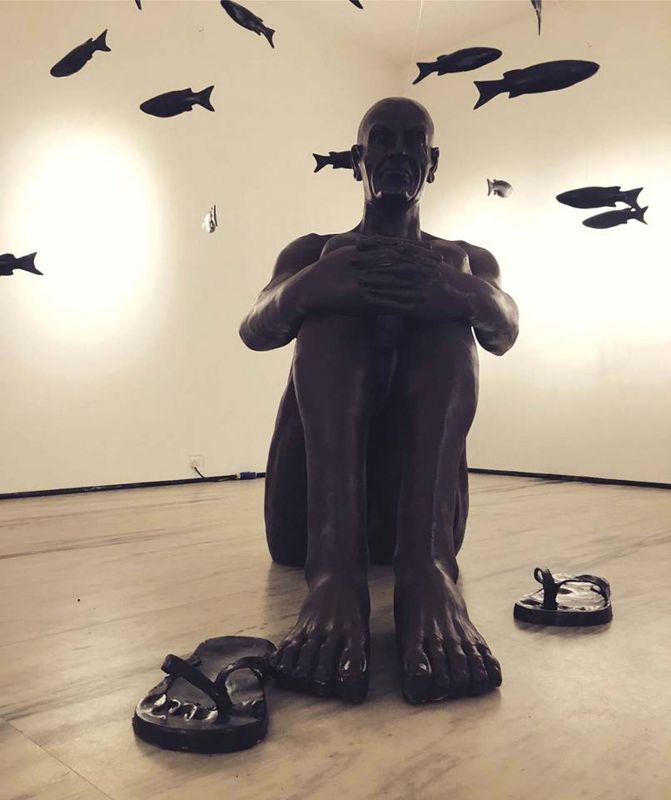 Abra
Abra
Shedding more light on the poems, Joy says, “Abra is what I first wrote and it is the name of a creek between Bur Dubai and Deira. I had gone to Dubai to find work and to me it was an exile. To cross the creek required '50, which I did not have and which a friend would pay for me. So Abra is very emotional to me. I saw the suicides and depression of migrant workers from different nationalities and it struck a chord in me.” Abra is represented by the sculpture of the man with the fish.
Deira is where, Joy says, all kinds of businesses happen from the straight to the covert. There are mosques, clubs and brotherhoods there and the city never sleeps. He likens it to Mumbai. “Deira is a prose form of those thoughts and sights,” he states. It takes the tangible form through the half wreck of a ship.
Rolla is a square in Dubai where throngs of people from different nationalities converge every Friday. Joy recalls the place as bustling, with groups exchanging pleasantries and bringing news and gifts from home. “I have heard sadness and happiness in that square and that has translated to the lines in Rolla.” This place is represented by the man in the chest sculpture.
Joy feels the sculptures have done justice to his poems. “I am happy that my poems could take the image form through these sculptures,” he says.
The poetry installation is in its fourth season and it is a testimony to the success of the project. Vinod Krishna is one of the creative forces behind this project and gushes, “The crowds have been swelling with each season and in a departure from the first one, the spectators now grasp the concepts and even criticise or praise the works pointing out the shortcomings, if any. This is an indication of an increased awareness from their side and a good sign. The visitors go into the detailing of the sculpture or the lines of the prose or the quality of the sound.”
The present season too has aced, he claims. “Anyone who has listened to the poems will identify with what the poet wants to share,” he says.
Linu Chakrapani took two months to finish the sculptures. “It was initially designed in clay and then the moulds were made. It was a three-way process, ” says the sculptor, who studied at the RLV College in Kochi.
Nithin Lukose is the sound designer and he says the challenge lay in the fact that poetry did not give him an avenue for any reference. “Sometimes I would work with the poet's feel, sometimes the stanza’s feel, but I enjoyed that process and each poem touched me,” he explains.
State award winner Renganaath Ravee has added his talent to some sounds in the installations. The sounds of the sea and the waves crashing against the rocks were recorded on site from Deira, Abra and Rolla.

